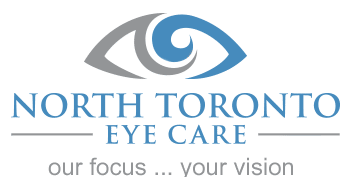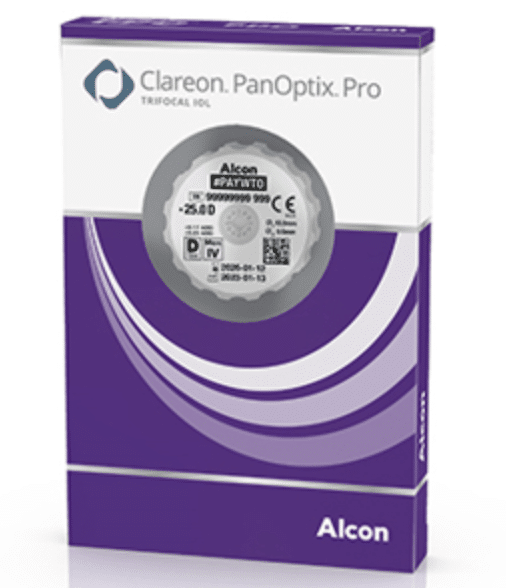astigmatism,Cataract,cornea,Dry Eye,Eye Exam,Featured,Medical News,Presbyopia,Refractive Lens Exchange

The success of cataract surgery extends beyond simply achieving 20/20 vision. Patient satisfaction and optimal refractive outcomes depend significantly on maintaining a healthy ocular surface, making pre-operative dry eye management a critical component of comprehensive cataract care. At North Toronto Eye Surgical Centre, we recognize that addressing dry eye disease before cataract surgery is essential for maximizing both surgical precision and patient satisfaction.
The overall prevalence of dry eye in the general population has been found to be upwards of 50%, but is even greater in older adults who comprise the majority of cataract surgery candidates2.

Dry eye disease fundamentally disrupts the integrity of the ocular surface through:3
- Tear film instability
- Ocular surface inflammation
- Compromised corneal and conjunctival health
This creates a cascade of complications that directly impact surgical outcomes:
- Inaccuracies in pre-operative measurements of the eye (biometry)
- Poor post-operative ocular comfort
- Poor post-operative quality vision
Impact on Pre-Operative Measurements
Tear film irregularities due to dry eye disease alters critical pre-surgical biometry measurements used to develop an accurate surgical plan and for precise intraocular lens (IOL) power calculations.4 When dry eye causes tear film instability, it leads to deviations in corneal and astigmatism measurements.
Studies have demonstrated that treating dry eye before biometry measurements significantly improves refractive outcomes. In a study including patients with dry eye disease and visually significant cataracts, corneal curvature readings were taken before treatment and following treatment:5


For patients receiving premium lifestyle IOLs with the goal of reducing glasses wear post surgery, an unstable tear film may:
- Introduce false astigmatism during corneal topography, leading to erroneous recommendations
- Worsen the postoperative quality of vision due to under or over correction in refractive error
———- All of which can reduce post-operative patient satisfaction ———-
Impact on Ocular Comfort and Vision
Untreated dry eye significantly affects patient comfort and recovery following cataract surgery. Studies show that patients with pre-existing meibomian gland dysfunction had worsened symptoms of dry eye, such as foreign body sensation, grittiness, itchiness and tearing after cataract surgery. This underscores the importance of identifying and treating dry eye before surgery to minimize post-operative discomfort and optimize healing.6
The tear film serves as the most critical refractive surface in the human optical system. When compromised by dry eye, it can cause intermittent blurred or fluctuating vision, reducing patient satisfaction. Furthermore, secondary to tear film instability, dry eye creates increased light scatter and reduces contrast sensitivity.6
North Toronto Eye Surgical Centre’s Approach
We have developed a systematic approach to managing dry eye in pre-operative cataract surgery patients, incorporating both diagnostic testing and targeted treatments to optimize surgical outcomes.7
Our evaluation begins with thorough ocular surface testing that goes beyond patient symptoms. We utilize multiple diagnostic modalities including:

ZEST (Zocular Eyelid System Treatment) is a highly effective in-office procedure designed to cleanse the eyelids and the base of the eyelashes. This treatment is perfect for removing bacteria, biofilm, Demodex mites, dandruff, debris, and excess oil. It utilizes a specially formulated gel containing refined okra extract. known for its power cleansing properties.
Home Therapy:
- Preservative-free artificial tears for daily lubrication and tear film stabilization
- Hot compresses to improve meibomian gland function and meibum flow
- Prescription eye drops including cyclosporine, lifitegrast, or topical steroids as indicated to address inflammation and improve tear production
Establishing a preoperative dry eye management plan not only improves clinical outcomes but also enhances patient confidence and satisfaction with their surgical experience.
At North Toronto Eye Surgical Centre, we recognize that exceptional cataract surgery outcomes require more than technical surgical skill—they demand comprehensive pre-operative optimization of the ocular surface. With more than 70% of cataract surgery candidates having undiagnosed dry eye disease, systematic screening and treatment are essential components of modern cataract care.
Our integrated approach combining thorough ocular surface testing, ZEST cleaning protocols, and targeted dry eye treatments using both home-based therapies and advanced in-office procedures like IPL and LipiFlow represents the current standard of care for optimizing surgical outcomes. By prioritizing ocular surface health before cataract surgery, we can ensure that our patients not only achieve excellent visual acuity but also experience the comfort and satisfaction they deserve from their surgical investment.
References
- Gupta PK et al. Prevalence of ocular surface dysfuncation in patients presenting for cataract surgery evaluation. J Cataract Refrac Surg. 2018;44(9):1090-1096
- Chen, H., McCann, P., Lien, T. et al. Prevalence of dry eye and Meibomian gland dysfunction in Central and South America: a systematic review and meta-analysis. BMC Ophthalmol 24, 50 (2024). https://doi.org/10.1186/s12886-023-03249-w
- McCann P, Abraham AG, Mukhopadhyay A, et al. Prevalence and Incidence of Dry Eye and Meibomian Gland Dysfunction in the United States: A Systematic Review and Meta-analysis. JAMA Ophthalmol. 2022;140(12):1181–1192. doi:10.1001/jamaophthalmol.2022.4394
- https://us.alconscience.com/sites/g/files/rbvwei1736/files/pdf/Ocular-Surface-Disease_Impact-on-Pre-Surgical-Biometry-and-Symptoms-in-Refractive-and-Cataract-Surgery-US-DEOH-1900003.pdf
- Matossian, C. (2020) Clin Ophthalmol, Volume 14, pp. 2283–2289. Available at: https://doi.org/10.2147/opth.s263046.
- Guo OD LW, Akpek E. The negative effects of dry eye disease on quality of life and visual function. Turk J Med Sci. 2020 Nov 3;50(SI-2):1611-1615. doi: 10.3906/sag-2002-143. PMID: 32283910; PMCID: PMC7672346.
- Naderi K, Gormley J, O’Brart D. Cataract surgery and dry eye disease: A review. Eur J Ophthalmol. 2020 Sep;30(5):840-855. doi: 10.1177/1120672120929958. Epub 2020 Jun 9. PMID: 32515220; PMCID: PMC7549290.


